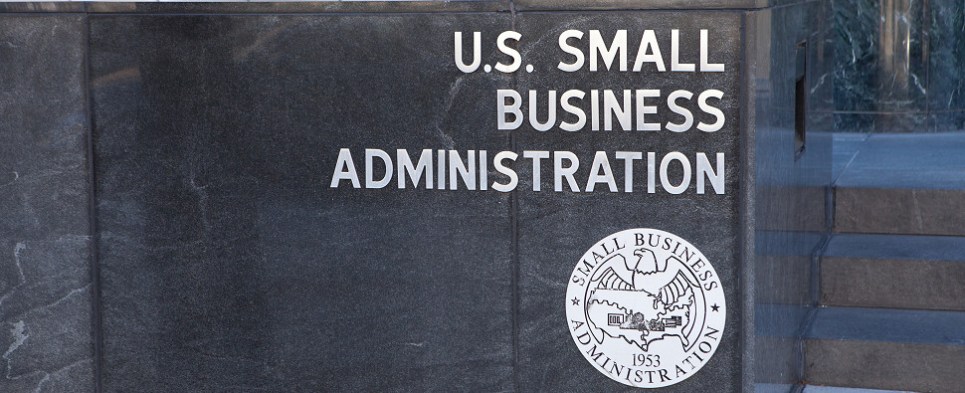SMALL BALL
Last year, Alpha Technologies, a company headquartered in Hurricane, West Virginia, was in the process of applying for a commercial loan to expand its data center, when its banker consulted with a representative of the Small Business Administration and determined that the deal qualified for an SBA export loan guarantee.
How so? A small part of the transaction involved exporting hardware to international clients, but more importantly, “Their services help support some domestic customer’s export sales and services,” said Bill Houck, the regional manager in SBA’s Office of International Trade. “That makes Alpha an indirect exporter.”
Indirect exporter, you say? That’s right, unlike loan guarantees available from the United States Export-Import Bank (EXIM), SBA export loan guarantees are available to companies that sell to companies that export. That would mean, for example, that a component manufacturer selling to an aircraft company that will sell its aircraft abroad could qualify for an SBA export loan guarantee. Or, it could mean that a company selling its product to a domestic trading company that turns around and sells the item overseas could also qualify. And this applies to all three SBA export support programs: SBA Export Express, the Export Working Capital Program, and the International Trade Loan Program
What difference does it make? “It was very advantageous,” said Charlie Dennie, vice president of government relations and special projects at Alpha Technologies. “Export loans are 90-percent backed by the SBA, so lending institutions have their risk significantly mitigated and that makes it easier for them to commit the loan.”
Conventional SBA loan guarantee programs back 75 percent of a loan, as do EXIM guarantees. In this case, we’re talking about a $4.8-million loan by Community Trust Bank that closed in June 2017. “The proceeds of the loan were used to reinforce and make improvements at our data center,” said Dennie.
Alpha Technologies is a technology support company with an 80,000 square-foot data center in South Charleston, West Virginia. “A big part of what we do is IT support for companies in Mexico, Canada, Germany, and the UK,” said Dennie. “The data center improvements support the work we do with international clients.”
Supporting indirect exporting isn’t the only benefit SBA loan guarantees feature that EXIM’s do not. Another is that the SBA doesn’t require any US content to qualify for its programs. EXIM typically requires 50 percent US content.
“The US-content issue is certainly a comparative advantage to the EXIM Bank Export Working Capital financing programs,” said Edward Tang, vice president and export finance manager, at GBC International Bank.
The differing content requirements “is an artifact of the different missions of the two agencies,” said Jeff Deiss, the SBA’s regional export finance manager for Northern California. “Our mission is to support small businesses of all kinds to be successful. Even a company that simply forwards on a foreign product is doing something for the US balance of payments and it is creating business activity in the United States, so we are not hung up on the issue of content. It’s one less detail a lender has to worry about.”
It’s also worth noting that the small businesses the SBA supports don’t have to be all that small. They need to have a tangible net worth of $15 million or less, and a two-year average net income (after taxes and excluding carryover losses) of $5 million or less.
The SBA is also more permissive than EXIM when it comes to selling to military organizations. “Even if it’s something like food products,” said Tang, “for example, exporting milk or cheese to a military base in South Korea, the EXIM Bank can’t support such a transaction but the SBA can.”
When it comes to documenting indirect exports, “it’s pretty simple,” said Houck. “There just has to be some kind of paper trail that shows the product is for an export order.”
But sometimes it’s not so simple. Teresa Wallweber, a senior vice president at Fidelity Bank in Wichita, Kansas, was working on a loan for an aircraft component manufacturer selling to Boeing, but couldn’t get documentation from the airframe manufacturer that the component was going on aircraft that were to be exported.
“Nobody at Boeing wanted to put their name on anything,” she explained.
So she went another route. She located a Boeing website that showed unfilled orders, both domestic and foreign. Since she knew which model aircraft her client’s components were going on, she was able to calculate the percentage of her client’s business that was connected to exports.
“The SBA granted us the authority to use this back-door information,” Wallweber stated. In this case, the loan was to finance the $500,000-purchase of equipment to make aircraft parts, clearly an indirect export scenario.
Also notable is that vendors with receivables from companies like Boeing would usually qualify for an ordinary commercial load without too much trouble. “But in this case the customer already had quite a bit of equipment debt,” Wallweber explained. “Normally we would want to amortize this kind of loan over five years but to get the payments in line with the client’s cash flow we needed seven to 10 years.” The SBA guarantee allowed Fidelity to extend the company a 10-year equipment loan.
Alpha Technologies is now benefiting from the proceeds of the its loan, thanks to its designation as an indirect exporter. “The project is still ongoing,” said Dennie. “We expect it to be completed in June or July of this year.”
But not enough people are familiar with the notion of indirect exporting and its potential impact on eligibility for SBA export loan guarantees. “It’s an under-served feature that many more US small business could take advantage of,” said Tang.
Apparently that goes for lenders as well. That’s why the SBA’s Jeff Deiss advises bankers to “consider making it their practice to ask each customer, ‘Do you sell to anyone who exports?’”
The same should go for borrowers. Because the answer to that question could make the difference in the availability of SBA export loan guarantees, and those credit programs can boost the ability of small businesses to expand.





Leave a Reply